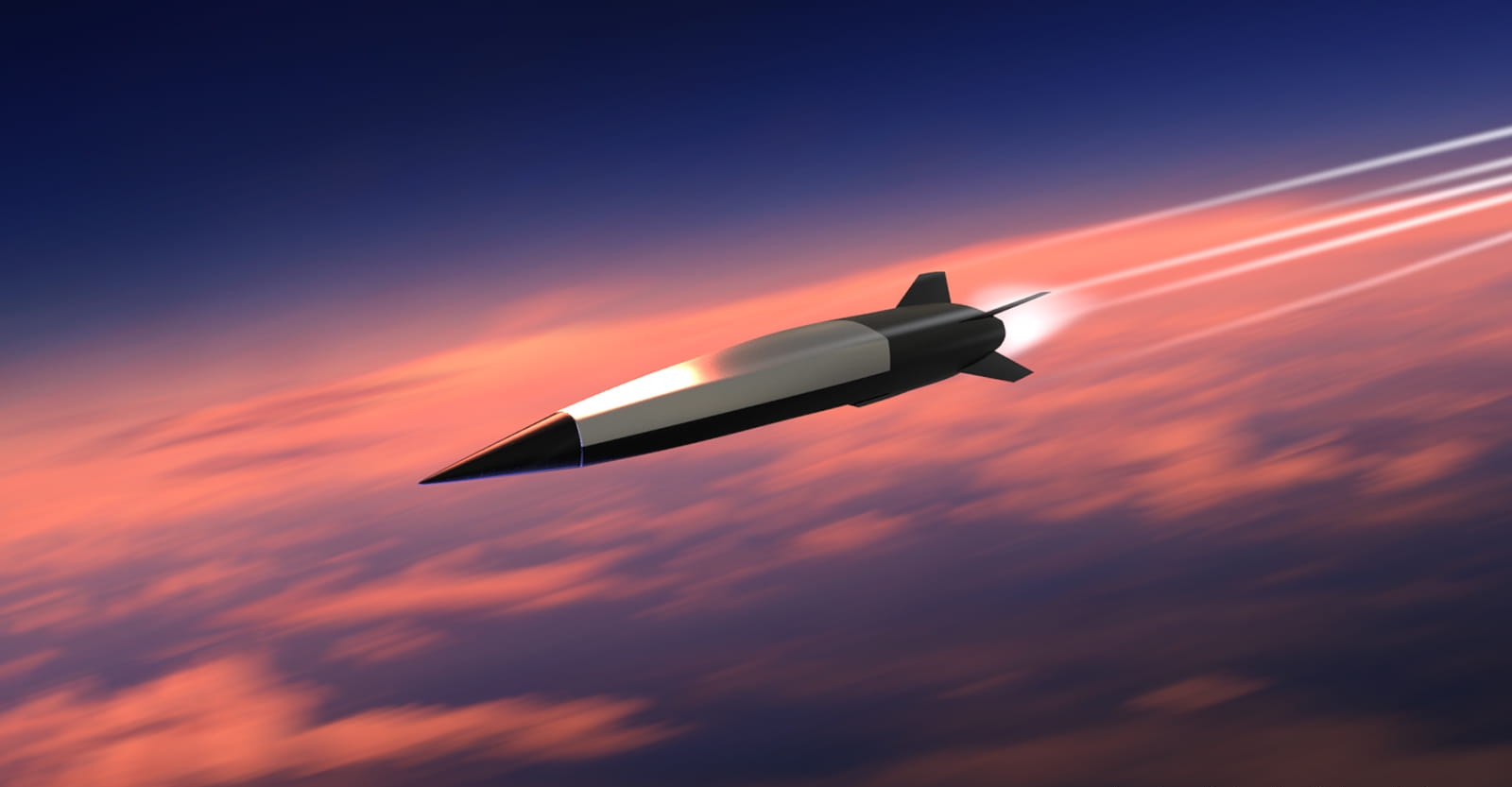Japan has developed and tested the Hyper Velocity Gliding Projectile (HVGP) as part of efforts to join the hypersonic club and bolster defense against hypersonic weapons from China and Russia.
According to reports published last week, Tokyo’s ATLA (Acquisition Technology and Logistics Agency) — which operates within the framework of Japan’s Ministry of Defense (MoD) — announced that Japan carried out its first hypersonic weapon test in the United States on March 23, 2024.
Interestingly, the US itself is struggling to field hypersonic weapons and trails Russia and China.
The computerized graphic and video footage of the test launch, which was only recently made public, depicted the weapon as a “High-Speed Gliding Missile for Island Defense,” implying that the hypersonic weapon falls within the boost-glide vehicle category. The weapon, which has been under development for a while, has reportedly been reserved for use by the Japan Ground Self-Defense Force (JGSDF).
According to ATLA, the test was conducted “to verify the measurement systems for future launch tests.”
Amid mounting threats posed by hypersonic weapons deployed by Russia and China, Japan’s HVGP is scheduled to be deployed in fiscal year 2026. There is growing concern in Tokyo regarding North Korea’s hypersonic missiles.
Hypersonic weapons are far more difficult to intercept since they can maneuver while in flight and travel at speeds greater than five times the speed of sound.
Compared to ballistic missile attacks, which can be defended with cutting-edge missile defense systems, hypersonic weapons are more challenging to intercept since they are agile and capable of changing direction while in flight.
The development of interceptor missiles becomes necessary as China, Russia, and North Korea aggressively increase their hypersonic arsenal.
While Russia has deployed two of three hypersonic weapons, including the Zircon and the Kinzhal, China is advancing with longer-range hypersonic weapons such as the DF-27 and has already operationalized the DF-17.
Japan has been vocal about enhancing its hypersonic weapons to bolster security and establish a defensive response against its rivals in the area. The HVGP will be used for island defense, in line with Japan’s stance about establishing defense against hypersonic weapons.
As per reports, the warhead separates from the truck-mounted launcher and glides to hit its target after being propelled by a booster. The HVGP will be built in steps, with incremental feature upgrades, to enable early deployment. This time, a test was carried out using the most basic “Early Deployment Version (Block 1)” test projectile.

Additionally, reports suggest that Japan has planned to finish developing an “Enhanced Capability Version (Block 2A)” with a much longer range that can attack targets up to 2,000 km away and an “Enhanced Capability Version (Block 2B)” with a 3,000 km range in the fiscal years 2027 and 2030, respectively.
Tokyo has been diligently working on two classes of hypersonic standoff systems: the Hypersonic Cruise Missile (HCM) and the Hyper Velocity Gliding Projectile (HVGP). Japan’s defense minister, Yasukazu Hamada, reiterated that Tokyo had entered a new era of crisis and exhorted the country to reconsider its security strategy in light of heightened military threats from China, Russia, and North Korea.
As previously reported by EurAsian Times, the Japanese MoD submitted its largest-ever budget request in 2022 for the year ending March 2024. A large chunk of that money was earmarked for building deterrence, including developing and deploying hypersonic missiles to counter China and North Korea.
What Is So Special About Japan’s HVGP?
The HVGP is a standoff missile that can strike adversaries occupying isolated Japanese islands from outside the enemy weapon engagement zone. The projectile is meant to be launched using a solid-propellant rocket booster, separating from a great height and gliding at hypersonic speeds until impact.

More specifically, the HVGP will have a solid-fuel rocket engine that propels its warhead payload toward a certain altitude. After that, it will separate from the booster and glide toward its target, using its altitude to maintain high velocity until impact. It will be guided by the Global Navigation Satellite System (GNSS) and attack the target from above at 90 degrees.
With an inertial navigation system as a backup, satellite navigation would be the primary means of projectile guidance. When engaging moving targets, it is believed that the guidance would also come from radio-frequency imaging and infrared homing.
July 4 — WATCH: Japan recently conducted a launch test of a Hyper Velocity Gliding Projectile for island defense (島嶼防衛用高速滑空弾).https://t.co/aQboEdp7bKhttps://t.co/L5p2ehdbkS pic.twitter.com/WsHZRTb5LB
— Ryan Chan 陳家翹 (@ryankakiuchan) July 4, 2024
There is speculation that the HGVP may, one day, be able to combat aircraft carriers and have anti-ship capabilities. Some conjecture that in the future, the warhead may even have a seeker installed to be used in anti-ship missions.
Several reports have observed that these weapons will be equipped with two different warheads, one designed for seaborne targets and the other for land targets. The former will be an armor-piercing warhead to penetrate an aircraft carrier’s deck. EurAsian Times, however, could not verify these claims.
In April last year, the Japanese MOD also inked a deal for the mass manufacturing of hypersonic glide missiles, with delivery scheduled for 2026-2027. A MoD graphic released at the time stated that the hypersonic glide missiles would be launched from ground units garrisoned on Japanese islands or deployed to Japan’s remote islands in a manner akin to the US Marines’ concept of operating small units with anti-ship capabilities around the first island chain.
1) #Japan will enhance stand-off defense capability + air & missile defense capability to deter invasions against Japan:
Stand-off missiles:
Upgraded Type-12 surface-to-ship missile
Hyper Velocity Gliding Projectile (HVGP)
Hypersonic Weapons
New anti-ship missiles, JSM & JASSM pic.twitter.com/25ulNbpdtL— Indo-Pacific News – Geo-Politics & Defense (@IndoPac_Info) November 15, 2022
The Japan-based Mainichi newspaper earlier said, “The 2026 model is for ‘targeting a potential enemy invading Japan’s remote island.’ In the second stage, an upgraded type will be developed for possible installation in fiscal 2028 or later, featuring claw-shaped payloads, enhanced speeds, firing ranges, and more complex trajectories.”
Having a hypersonic weapon comparable to China’s is crucial to create deterrence, especially considering the potential for a Chinese invasion of Taiwan will involve Tokyo in a US-led regional conflict.
That said, the latest test’s scope was limited. It was intended to evaluate fundamental propulsion, materials, and essential electrical, mechanical, and electronic assembly. Additional test firing would be necessary to verify the system’s complete functionality at all stages. Also, it is unclear whether the HGV separated from the launch vehicle and successfully reached its target.
- Contact the author at sakshi.tiwari9555(at)gmail.com
- Follow EurAsian Times on Google News




